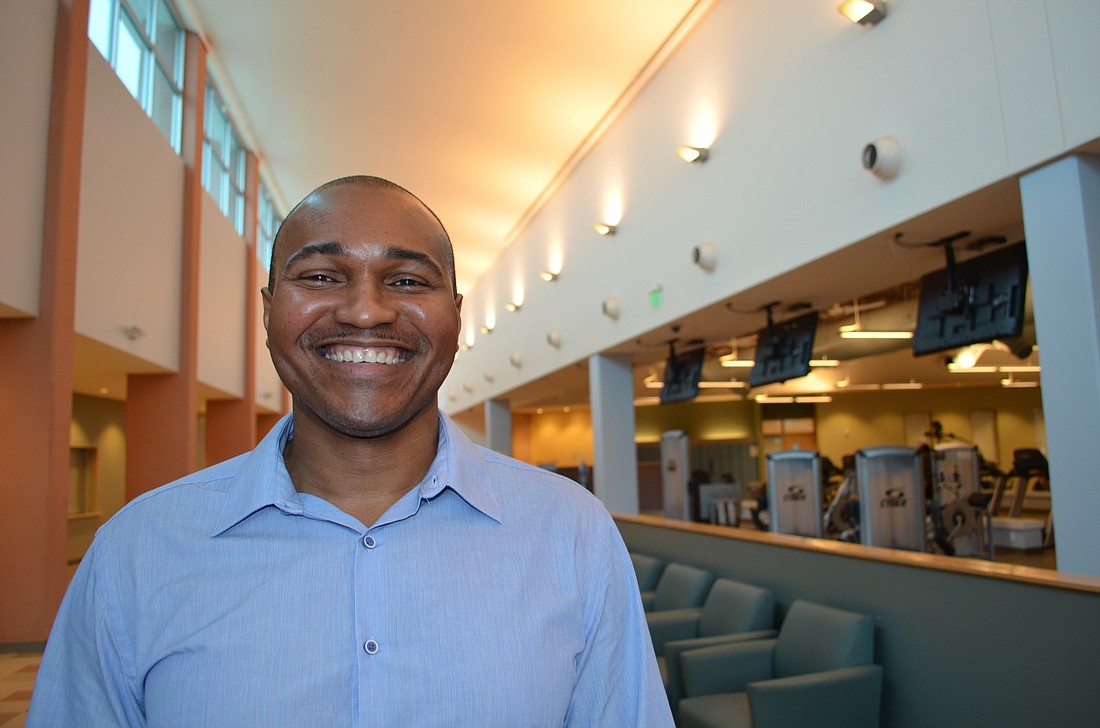- May 3, 2024
-
-
Loading

Loading

As the city increases its focus on enhancing its parks and recreation offerings, officials have frequently pointed to the Robert L. Taylor Community Complex as one example of success.
That’s why it came as no surprise when the city revealed last week that it promoted Robert L. Taylor Director Jerry Fogle to fill the newly created position of parks and recreation director. We talked to Fogle about offering new services, overcoming funding issues and his belief in the power of parks and recreation to change lives.
How did you get into the field of parks and recreation?
When I was about 10 years old, I lived in a tough neighborhood. They had a lunch program at one of my parks. When I took my younger brother and sister there for lunch one day, someone approached me, trying to get something I shouldn’t be doing — selling drugs, basically. A couple of mentors at the park knew something was wrong. They were like, “Hey, Jerry, what’s going on?” And I told them, and they ended up telling me — don’t go down that road. You’ll end up either in jail or dead. As a 10-year-old, I was thinking, “Hey, I’ll do what I need to help my family.”
They said, “How are you going to help your family if you’re dead or in jail?” That woke me up. So I said, “I want to be what you are.” And they told me, “No, you want to be a parks and recreation director.” They said, “We can help individual kids here and there, but all those kids getting food. The parks and recreation director made that happen for the whole community.”
How did you make the leap from overseeing the Robert L. Taylor center to parks and recreation director?
Before I got the job at the Robert L. Taylor center, I was looking and I was thinking, “They don’t even have a parks and recreation department!” I was thinking, “I’m going to work for public works? What is that?” When I came here, I went to my boss, Public Works Director (Doug) Jeffcoat, and said, “Could we maybe look at the possibility getting a parks and recreation department? What can we do?”
I was thinking, “They don’t even have a parks and recreation department!”
I got in his ear. Eventually — it took a while — but he got the ear of Marlon Brown, the deputy city manager. We created a PowerPoint, went in front of the commissioners (last year), and they got behind us.
What makes the Robert L. Taylor center a model of success for the city?
I think it’s a combination of our community-based programs, along with our athletic programs. We have after-school programs, which are a necessity — especially for economically challenged communities...We do a variety of things within the city and outside the city. A lot of people come here to rent the facility. We have weddings, quinceañeras — practically everything you can think of, we do here. I think that makes us unique. A lot of places concentrate on one thing, but we do a variety of things for the whole community.
What kind of value do you think enhanced parks and recreation services can add to the community?
I would love to not only aesthetically improve our parks, but also look at enhancing our parks with amenities. I would like to meet with our citizens, our residents to get their input on what they would like to see with their parks. I don’t want to dictate what’s going in everybody’s parks. I want them to let us know how we can make that happen.
I don’t want to dictate what’s going in everybody’s parks. I want them to let us know how we can make that happen.
My thoughts are to do different events and activities to bring neighbors together, bring kids and families together, create a rapport. Strong neighbors create strong communities. I think parks and recreation helps communities become stronger, but also become safer.
The city has been discussing new funding sources for parks, including creating a dedicated parks taxing district. What are your thoughts on that option?
For me, the district is a great way to go. First and foremost, the public has to vote on it. That means they want it, they have an understanding they may pay a little bit more, but they’re going to be able to see where their money is going.
As soon as the downturn hits, parks and recreation is the first to be cut.
It gives you an opportunity to put up money for a rainy day, so to speak. Then, if you want to be able to put more benches in a park, or put a play unit in that park, you’re able to do that with funding you’ve built up for years. It’s more security as far as staffing goes. As soon as the downturn hits, parks and recreation is the first to be cut.
What in your experience at the Robert L. Taylor center has reinforced your belief that this work can serve a greater good?
The hard knock program we have for the at-risk youth is really a big key. We had a kid that wouldn’t talk with us, wouldn’t say one word, wouldn’t look you in the eye. He would look down and make a hand motion and you had to figure out what he wanted. We went through that program, got the kids tuxes and gowns, got limos and went to the Van Wezel. He did a presentation, looked everybody in the eye — and it was the most incredible feeling I had. This kid that couldn’t look you in the eye and say one word is standing here in front of 100 people, giving a presentation. It’s moments like that that fill my heart with joy.
This interview has been edited and condensed.